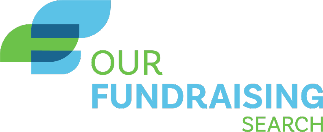I love boats. There is something about being on water that brings me a calm focus. (It should be noted that “calm” and “focus” are not two of my core brand equities.)
Travelling by boat can be an inherently more difficult proposition than traveling on land. Wind, waves and the wakes of other vessels are all forces for which you must constantly compensate as you are navigating a boat towards a specific destination. Similarly, the idea of setting a course for a destination and then anticipating and compensating for as many opposing forces as possible is the inherent value of a strategic plan for any organization.
Some nonprofit leaders will tell you that strategic plans are simply a box you must check for foundations; others will tell you they are overrated. I personally argue that they have been an essential tool for every organization that I have worked in and led. They are not, however, a panacea. A strategic plan is not a substitute for good governance, strong leadership and basic business sense. Rather, the four should work in harmony to help a nonprofit navigate towards its goals.
I have facilitated and written a lot of strategic plans over the course of my career. When an organization embarks on a strategic planning process, especially a nonprofit, I think it is useful to be clear on which problems the plan can help solve and which ones it cannot.
Things a strategic plan can do for you:
A good strategic plan will provide clarity of intent through clarity of language.
I have a close friend who is an effectiveness consultant. Like so many of us, her education is not in the field in which she works. She has a Ph.D. in behavioral neuroscience. She is a very effective facilitator. During sessions, she often stops and asks people in the room, “Tell me what you are feeling right now.” She explains that people’s emotions live in their amygdala, while rational thinking occurs in the cerebral cortex. Asking someone to articulate what they are feeling requires them to move their thinking out of the amygdala and into the cerebral cortex. Basically, the act of describing your emotions forces you to think about them, and then discharges them.
Strategic planning offers an organization as similar experience. While board and staff may believe they know what the organization is doing – or should be doing – forcing them to articulate it requires them to think about it. More importantly, the process of assembling language around a concept requires the key stakeholders to (hopefully) come to agreement over the organization’s strategy. This is where a key facilitator with good active listening skills is critical. It is not uncommon for two players in a strategic planning process to say diametrically opposite things, and then attempt to discharge potential conflict by saying “we’re saying the same thing.” A good strategic planning facilitator does not permit this.
The strategic plan must not allow vagaries in the name of courtesy. Instead, it must clearly articulate for those inside and outside the organization what the organization should be doing and why.
The best strategic plans provide both guidelines and permission to say “no.”
One of the best things about a well-written strategic plan is that it gives both management and the board clear
guidelines to pick and prioritize work. While I am inherently an optimist, I believe that unbridled optimism is the enemy of effectiveness. I once worked for an incredibly optimistic organization; so optimistic in fact that it never met an idea or initiative it didn’t believe in. Even mutually exclusive ones. The result is that there were so many people working on so many different projects that took us in so many different directions, the organization found itself on the brink of bankruptcy. Nonprofits are some of the most optimistic organizations in the world. People join the board and staff because they believe they can help change the world. And, they can. But there is a need for a healthy dose of practicality overlaying that optimism. The road to success for any organization is lined with rejected ideas, pet projects, and sacred cows.
Your strategic plan will create a set of measurements to evaluate your progress and help adjust your course.
Let’s return to our sailing metaphor. Crosswinds and waves usually conspire to push a boat off course. By both monitoring the winds and waves, as well as the position of the boat, a good sailor can adjust the heading to maximize the efficiency of travel to their destination. On the other hand, without monitoring conditions and evaluating present position, the boat can wind up off course. In the worst-case scenario, it can wind up some place from which it cannot easily return.
A strategic plan without a clear set of measurements is nothing more than an aspirational statement. To be useful, the plan must distinguish the organization’s results measurements from its process measurements. In turn, the leadership of the organization can use these measurements to decide if the organization is off course, if there is a more efficient way to get to their destination and, occasionally, determine if there is an even better destination if they change course.
As I said above, a good strategic plan is not a panacea. There is no way to anticipate every hurdle the organization could encounter. Nevertheless, by anticipating the ones it is likely to encounter, it frees up resources when the unexpected does occur. There are a number of issues common to most organizations, especially nonprofits, which a strategic plan will not fix, although we might hope they would.
A strategic plan will not forge consensus.
Consensus is fine if it is organic. However, a lack of consensus should not be feared. Not everyone will agree that every plan is great or will want to be part of it. And, that is fundamentally okay. Consensus is forged through dialogue, not through a document. If it were possible to write a document that could bring all people together and create common clarity of purpose, there would be peace in the Middle East. Don’t try to write a plan that tries to be all things to all people.
A good strategic plan will not create collegiality or quell counterproductive behavior.
Not every person is a good candidate for board service, nor is a common purpose enough to create strong relationships. A strategic plan cannot build collegiality. If there are relationship issues among staff members, board members or between the two groups, don’t embark on a strategic planning process. Instead, address those issues first, head on.
Your strategic plan is not a substitute for strong leadership or good governance.
I often have to remind boards that “nonprofit” is a tax status, not a license to lose money. The fundamental laws of gravity and economics apply equally to all. The strategic plan doesn’t guarantee success, sound financial decisions or donor engagement. It does, however, contemplate how to enable all of those things.
A last word on strategic plans: avoid making them too complex. The best strategic plans I have seen can be summarized on one sheet of paper, front-and-back. Beware the consultants who want to drive you towards hundred-page decks or weighty tomes.






Leave A Comment